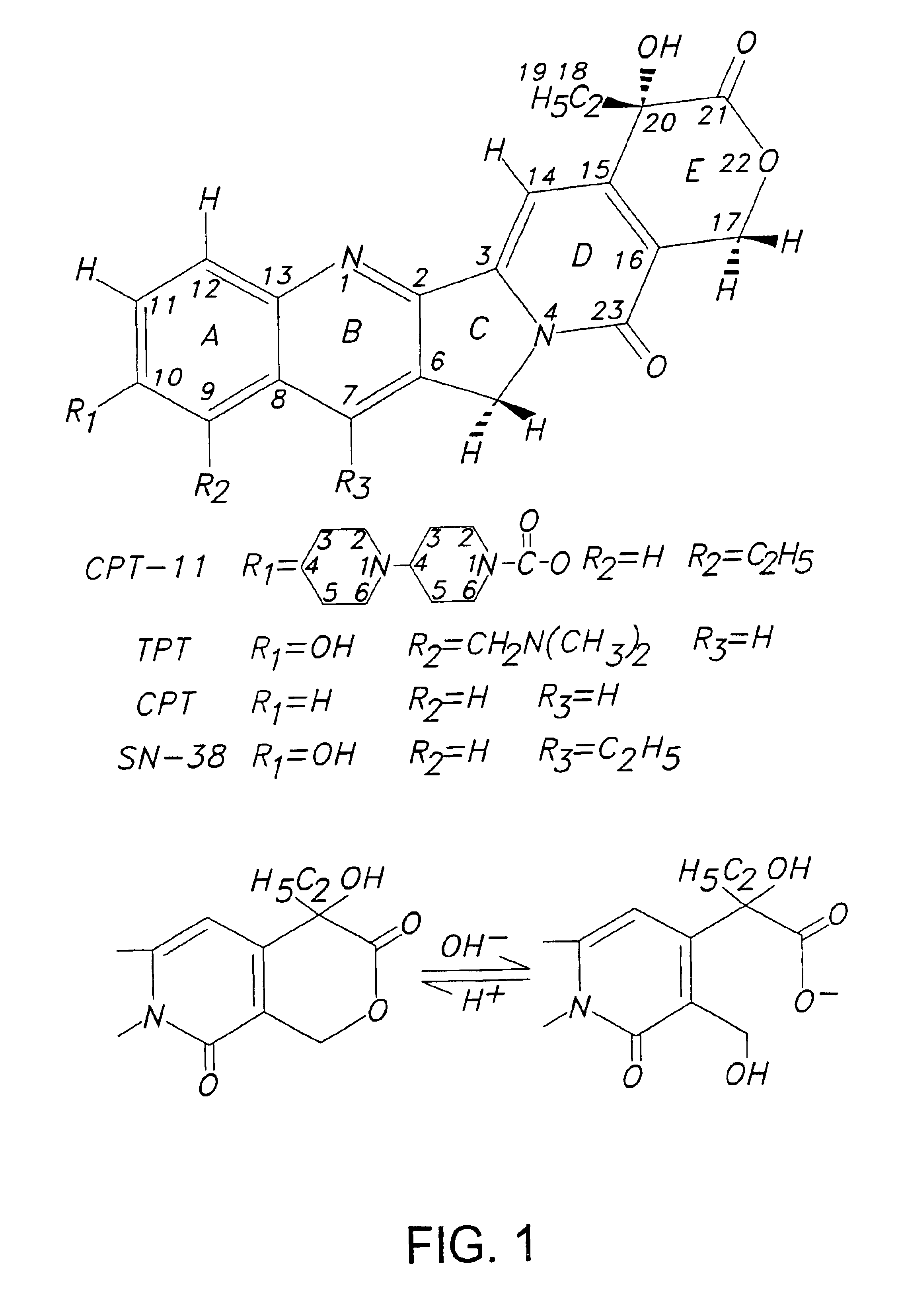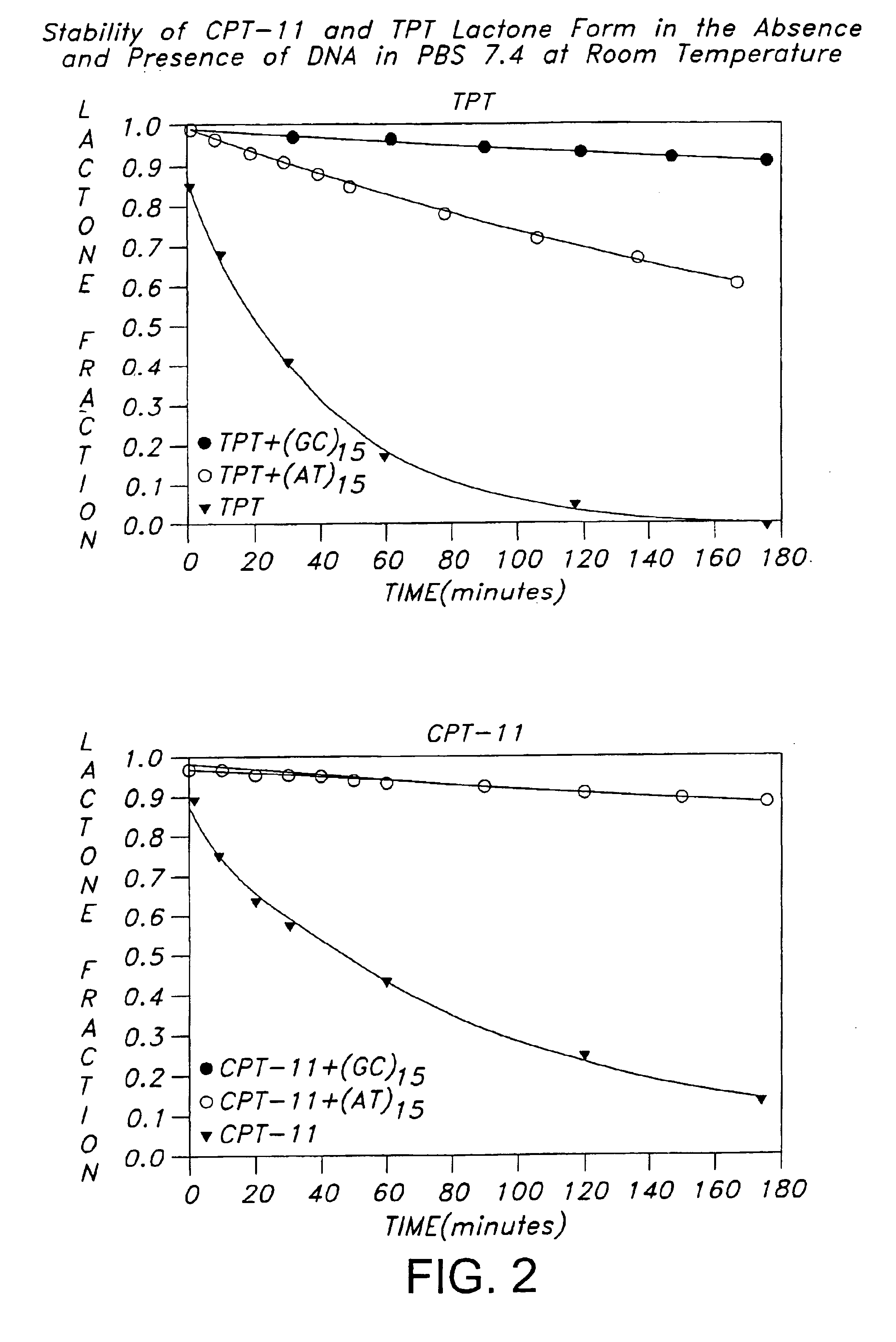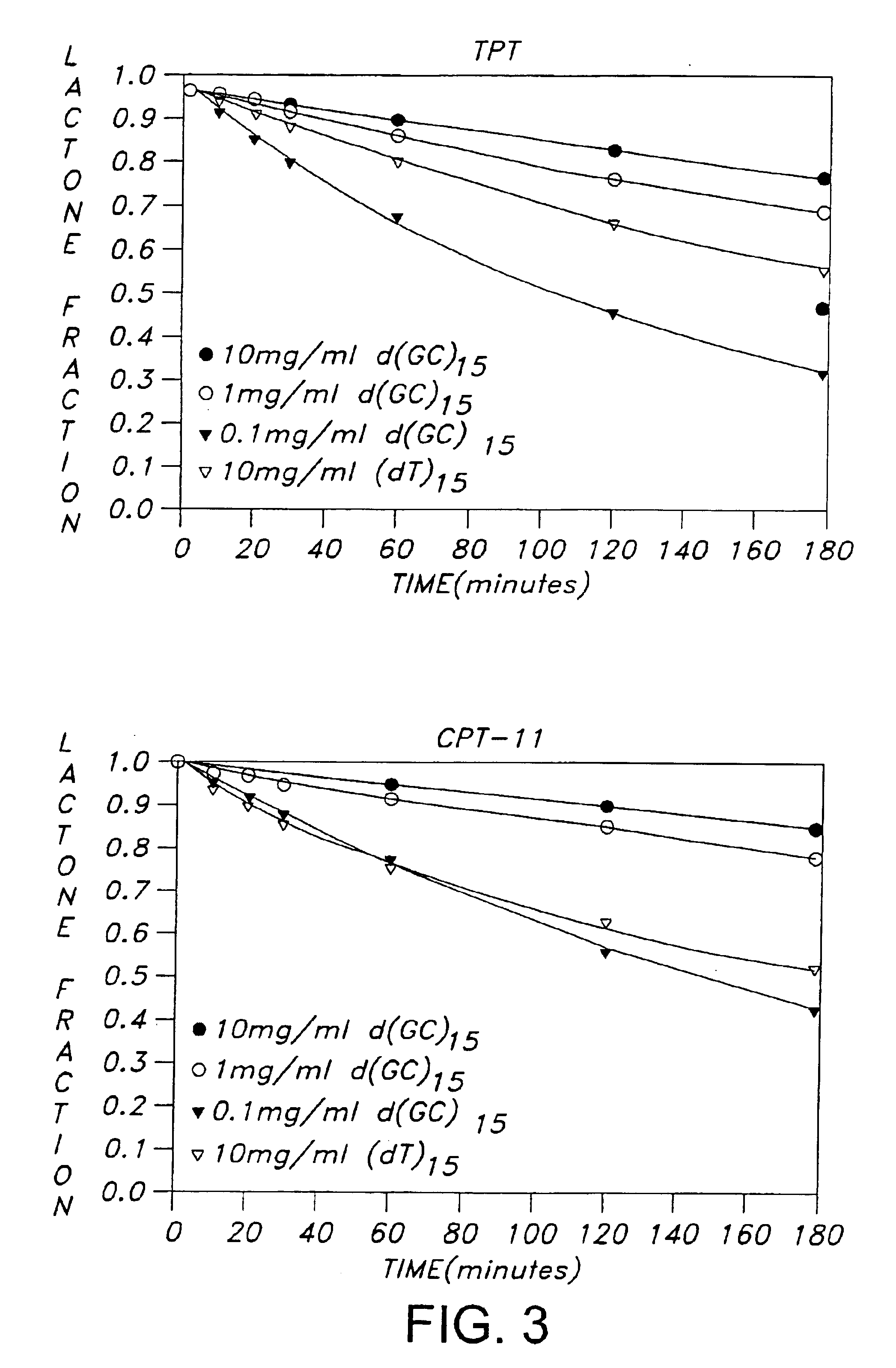Oligonucleotide delivery systems for camptothecins
a technology of oligonucleotide and camptothecin, which is applied in the field of camptothecin anticancer drugs, can solve the problems of limited clinical use of camptothecin drugs, limited chemical properties of camptothecin drugs, and extremely susceptible to hydrolysis, so as to facilitate the delivery, accumulation and processing, and enhance the effect of camptothecins
- Summary
- Abstract
- Description
- Claims
- Application Information
AI Technical Summary
Benefits of technology
Problems solved by technology
Method used
Image
Examples
example 1
[0097]Camptosar (CPT-11) and Hycamtin (topotecan, TPT), shown in FIG. 1, are two clinically useful anticancer drugs of the camptothecin family which function by inhibiting human DNA topoisomerase I (TopoI) (Liu et al., 1996; Takimoto and Arbuck; 1996; Rowinsky et al., 1993). Successful inhibition of TopoI by camptothecins is known from structure-activity studies to require an intact lactone ring (ring E) functionality (Wani et al., 1987; Jaxel et al., 1989; Fassberg and Stella, 1992; Hertzberg et al., 1989). Unfortunately, this lactone moiety is subject to hydrolysis under physiological conditions, i.e. at pH 7 and above, with each camptothecin agent existing in equilibria with its corresponding ring-opened carboxylate form. The position of the equilibria is pH-dependent, with the carboxylate form predominating at physiological pH after 1 hr of incubation (Fassberg and Stella, 1992). Previous equilibrium dialysis studies which evaluated the interactions of extensively incubated (16 ...
example 2
Camptothecin Drug-DNA Complexes in Solution
[0109]Camptothecin drugs reversibly complexed to synthetic oligonucleotides in their lactones forms were produced in phosphate-buffered-saline using the following procedure. The Phosphate-buffered saline (PBS) buffer contained 8 mM Na2HPO4, 1 mM KH2PO4, 137 mM NaCl and 3 mM KCl (pH 7.4). The oligonucleotides d(CGTACG) were synthesized on an automated DNA synthesizer at the Genetic Facility of University of Illinois at Urbana Champaign. In addition, (dG-dC)15 and (dA-dT)15 were purchased from IDT (Coralville, Iowa). The CPT-11 used in the study was generously provided by Yakult (Tokyo) and topotecan (TPT) was obtained from the National Cancer Institute. The drug lactone stock solutions were prepared in aqueous solution at 2 mM, pH 5. Solutions of drug-DNA complexes were prepared by mixing the appropriate amounts of drug stock solution and DNA stock solution in PBS, followed by pH adjustment to the desired value. Drug-DNA complexes solutions ...
example 3
[0110]Preparation of Polyetheyleneglycol-modified Cationic Liposomal Formulations Containing Oligonucleotide-topotecan Complexes.
[0111]Liposomes containing cationic DMRIE, DOPE, distearoylphospatidylcholine:cholesterol (5:5:60:30) were prepared by repeated freeze-thawing followed by extrusion through 50 nm pore membranes as previously described (Papahadjopoulos, D. Biochim. Biophys. Acta 1997, 557, 19-23; Papahadjopoulos, D. J. Biol. Chem. 1998, 273, 15621-15627). The procedure provided the total lipid concentration 1 mg / ml. The liposomal DNA (5′-tct-ccc-agc-gtg-cgc-cat-3′)-topotecan complex were produced by overnight incubation of liposomes with the DNA-Topotecan complex (10 μg) in PBS at 4° C. with gentle stirring. Nonencapsulated oligonucleotide and complex was removed using gel-exclusion chromatography on Sepharose B (Amersham Pharmacia Biotech). Particle size was determined by Malvern Zetasizer.
PUM
| Property | Measurement | Unit |
|---|---|---|
| concentration | aaaaa | aaaaa |
| concentration | aaaaa | aaaaa |
| pH | aaaaa | aaaaa |
Abstract
Description
Claims
Application Information
 Login to View More
Login to View More - R&D
- Intellectual Property
- Life Sciences
- Materials
- Tech Scout
- Unparalleled Data Quality
- Higher Quality Content
- 60% Fewer Hallucinations
Browse by: Latest US Patents, China's latest patents, Technical Efficacy Thesaurus, Application Domain, Technology Topic, Popular Technical Reports.
© 2025 PatSnap. All rights reserved.Legal|Privacy policy|Modern Slavery Act Transparency Statement|Sitemap|About US| Contact US: help@patsnap.com



